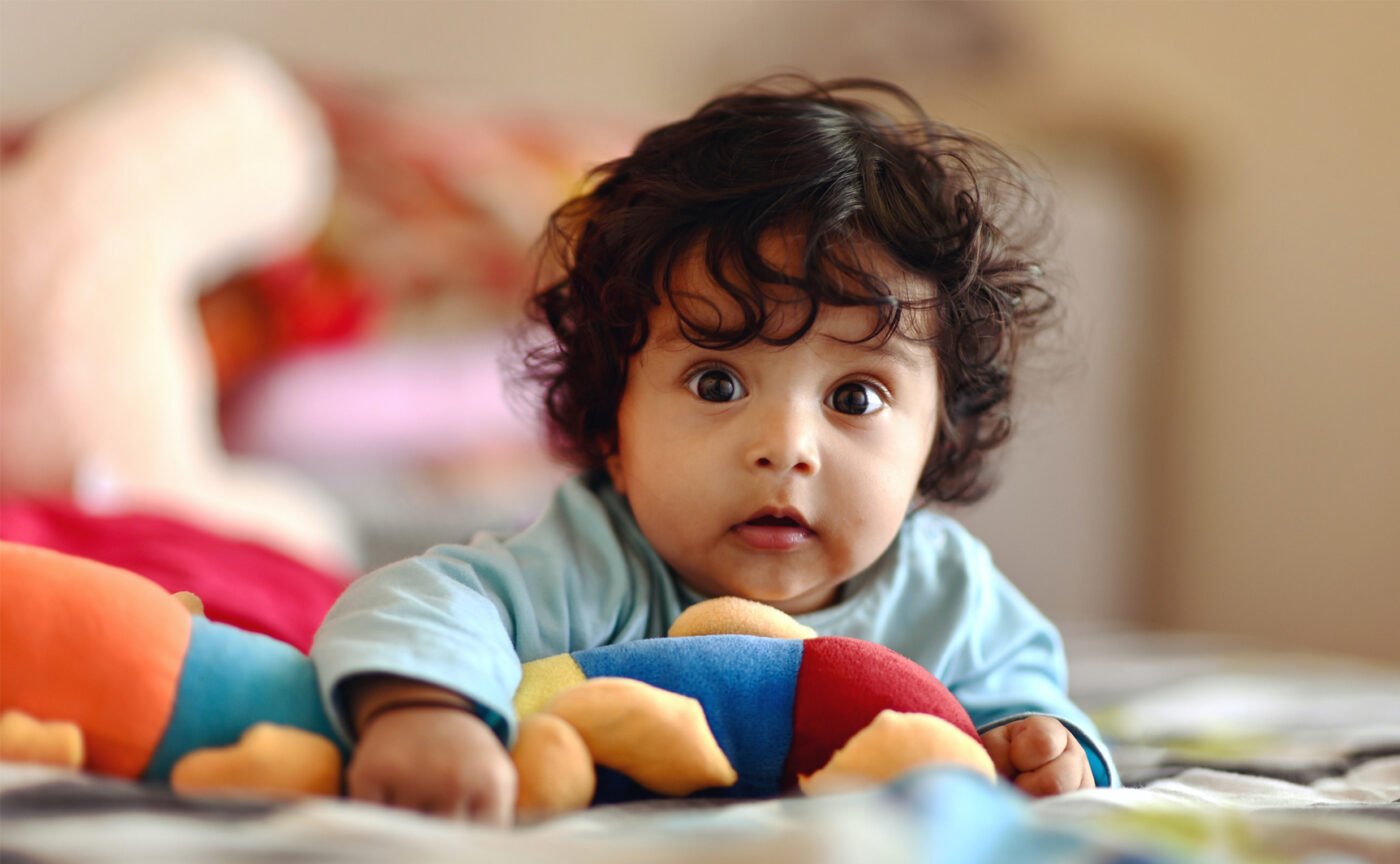8 gross motor skills activities for children
All children develop their gross motor skills at a different pace, but there are also things we can do to encourage them. Discover fun activities that can support their development.
Read more
Crawling is an exciting milestone. However, it’s not often thought of as something that needs to be taught – and this is true to an extent. Babies will often naturally develop their ability to crawl but there are definitely some things parents can do to encourage them.
This guide takes you through some key indicators of crawling and discusses some techniques to help your baby start moving.
Most babies will start to crawl around eight months. But, as with all developmental milestones, your baby will all move at their own pace. Some babies may start as early as six months, some much later and others may not crawl at all before jumping straight into walking.
Before your baby is ready to crawl, they need to develop strength in their neck and shoulders to keep their head lifted. They also need a lot of strength in their arms, back and core muscles to help hold themselves up and move around.
Tummy time is an excellent way to help your baby develop the strength they need to crawl. Some babies don’t enjoy it at first so it’s important to try and make it a pleasant experience.
Play soothing music to establish a calm, relaxed environment. Also, provide plenty of space and floor time on both front and back to let your child roll, kick and move freely.
As with most activities, it’s definitely important not to overdo it. Tummy time has a lot of great benefits, especially if tried a few times a day in small intervals. As your baby gets older, they’ll be able to spend more time on their tummy but be sure to start slowly and build up over time.
The general consensus is that newborns should practice tummy time for up to five minutes, around three or four times per day. When your baby reaches three months, they can spend a bit longer (around fifteen minutes) and then increase again (to twenty to thirty minutes) when they reach six months.
Rolling over is often a precursor to crawling. In general, babies will begin to roll over at around three to five months old. You may see them roll to their front, over to their back, or sometimes even just a half roll to their side. Of course, every baby will be different and develop at their own speed. Some may roll over early but take longer to learn to crawl from there. Others may start rolling over later, but move to crawling soon after.
There are some small things you can do as parents to encourage your baby to roll over. Tummy time is one of the main ways they will learn to move and build up strength. Besides this, you can also encourage rolling through play. By placing bright or musical toys to the side of your baby, you may find they naturally attempt to roll towards it. It’s also worth encouraging them to play on their back and side (as well as tummy time) so they can get used to all of these positions.
Once your baby has developed their strength, they will start getting themselves into a crawling position usually by moving from sitting into an all-fours position, or by tucking their knees up beneath them from a lying face-down position.
Once on all fours, your baby may then test their strength and balance by rocking. This rocking stage is important as it helps develop the vestibular and proprioceptive systems in the inner ear which help us stay upright, helps us to know how quickly we’re moving and how we’re positioned.
Gradually your child will be able to take their weight through their wrists and propel forward. You can encourage them by placing toys just outside their reach. Babies love to imitate so try getting down on the floor or encouraging an older sibling to demonstrate crawling to them.
There are two main types of crawling, the ‘commando-style’ belly crawling and the bilateral hands and knees method we usually picture when we imagine the action of crawling. Of course, not all babies stick to one of these and there are plenty of interesting variations to be seen (including moving backwards) but all have their benefits.
There are two main types of crawling, the ‘commando-style’ belly crawling and the bi-lateral hands and knees method we usually picture when we imagine the action of crawling. Of course, not all babies stick to one of these and there are plenty of interesting variations to be seen (including moving backwards) but all have their benefits.
Crawling develops gross and fine motor skills, balance, strength, orientation and mobility. The motion of ankles bending and flexing and the spinal rotations that strengthen the lower back all help prepare for walking. Binocular vision is developed as babies change their focus and explore new environments while hand-eye coordination is improved as babies pick up toys in their hands as they move around.
By activating both sides of the brain, bilateral crawling heightens cognitive functions. Studies have shown that this supports reading, vision, hearing and body movement in later years.
Who knew there was so much to simply crawling? Remember that all children develop at different speeds and it’s important to not feel pressured to start your baby crawling before they are developmentally ready.